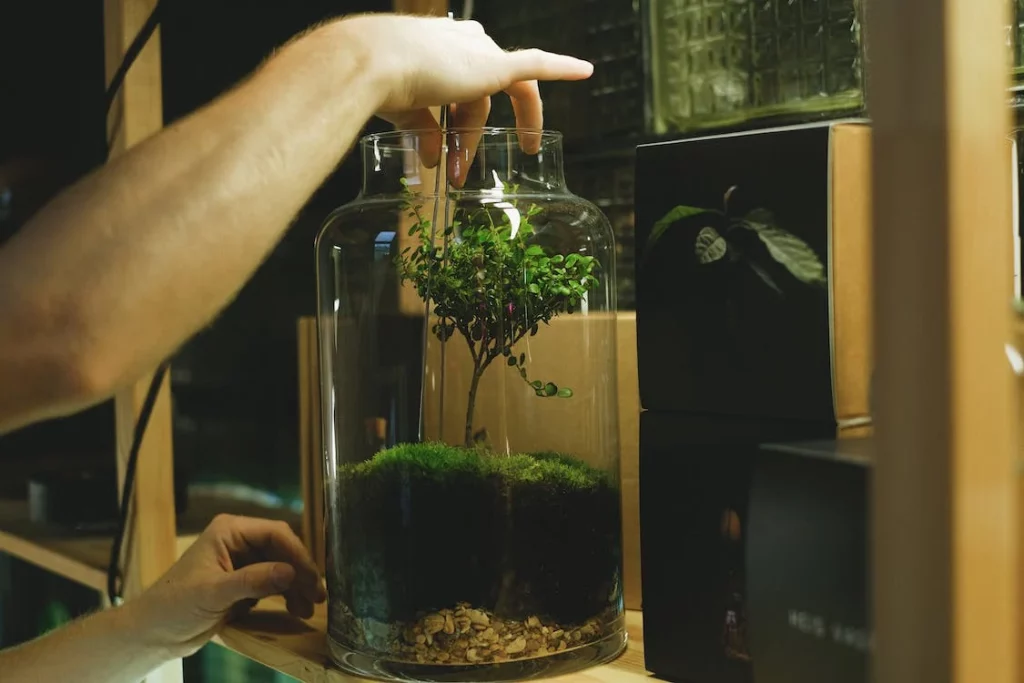How to Make a Terrarium: A Miniature Garden of Green Tranquility



How to Make a Terrarium: Crafting a Green Oasis in Glass
Terrariums are a delightful fusion of art and nature, encapsulated within the confines of glass containers. These captivating miniature ecosystems have captured the imaginations of plant enthusiasts and home decor aficionados alike. Crafting your own terrarium is not only a creative endeavor but also a way to bring a touch of serenity and greenery into your living space. Whether you’re a seasoned gardener or a complete novice, this comprehensive guide will take you on a journey through the intricate process of creating a mesmerizing terrarium, from choosing the perfect container to nurturing your own self-contained garden.
Choosing the Ideal Terrarium Container
The first step in your terrarium-making adventure is selecting the perfect container. The container you choose will not only define the aesthetics of your mini-garden but also play a crucial role in its functionality.
Tips for Container Selection:
Diverse Options: Terrariums can be crafted in a wide array of glass containers, from jars and fishbowls to vases and even repurposed lightbulbs. Your choice should reflect your personal style and the available space in your home.
Size Matters: Consider the size of the container carefully. Smaller containers are excellent for single-plant terrariums, while larger ones can accommodate a variety of plants, creating a lush microcosm.
Gathering the Essential Materials
Before you roll up your sleeves and embark on your terrarium-making journey, ensure you have all the necessary materials and tools at your fingertips.
Here’s a checklist of what you’ll need:
A glass container of your choice
Gravel or small pebbles
Activated charcoal (optional, primarily for closed terrariums)
Potting mix suitable for your chosen plants
Small plants (options include succulents, air plants, ferns, or moss)
Decorative elements (such as rocks, figurines, or miniatures)
A spoon or chopstick for planting
A spray bottle for watering
Step 1: Laying the Foundation
The foundation of your terrarium serves a critical role in drainage and preventing waterlogged soil. This is essential to maintain a healthy environment for your plants.
Tips:
Charcoal Layer (For Closed Terrariums): If you’re creating a closed terrarium, consider adding a thin layer of activated charcoal above the gravel. This helps filter the air and keeps unpleasant odors at bay.
Step 2: Selecting and Preparing Your Plants
The choice of plants is a pivotal aspect of your terrarium’s success. Opt for plants that share similar care requirements, as your terrarium will create its own microclimate.
Tips:
Variety in Height and Texture: To craft an eye-catching terrarium, incorporate plants of varying heights and textures. This diversity adds visual intrigue to your miniature landscape.
Step 3: Planting Your Terrarium
Planting your terrarium is where creativity meets precision. This step involves carefully placing your chosen plants within the container to create an aesthetically pleasing composition.
Create Planting Holes: Use a spoon or chopstick to create small, evenly spaced holes in the potting mix. This will be where your plants will find their new home.
Plant with Care: Gently remove your plants from their original pots, loosen the root balls, and place them into the holes you’ve created. Pay close attention to spacing to allow room for growth.
Tips:
Delicate Plant Handling: When dealing with delicate plants like air plants, take extra care to prevent any damage during planting.
Step 4: Adding Decorative Elements
Terrariums are not just about plants; they are also a canvas for your artistic expression. Elevate the visual appeal of your creation by introducing decorative elements like rocks, figurines, miniatures, or even tiny landscapes.
Tips:
Thematic Inspiration: Consider establishing a theme for your terrarium, whether it’s a desert landscape, a whimsical fairy garden, or a serene woodland scene. This theme can guide your selection of decorative elements, creating a harmonious and captivating composition.
Step 5: Terrarium Maintenance
Now that your terrarium is a living work of art, it requires proper care to thrive. Here are some essential maintenance steps:
Watering: The watering frequency depends on the types of plants you’ve chosen. Terrariums should be watered sparingly to prevent excess moisture buildup.
Pruning: Regularly trim any overgrown or unhealthy plant parts to maintain the aesthetics and health of your terrarium.
Light: Position your terrarium in a location with indirect sunlight. Excessive direct sunlight can lead to overheating and plant damage.
Tips:
Condensation Management: If you notice excessive condensation in a closed terrarium, temporarily remove the lid to allow for proper air circulation.
Step 6: Savoring Your Green Sanctuary
With your terrarium complete and thriving, it’s time to find the perfect spot in your home to display your masterpiece. Your terrarium can serve as a captivating centerpiece on your dining table, a focal point on a shelf, or a serene addition to your workspace.
As you sit back and admire your creation, you’ll discover that terrariums not only bring a touch of nature indoors but also offer a sense of tranquility and connection to the natural world. Observing the growth and changes within your terrarium can become a soothing and meditative practice, providing a serene escape from the bustle of everyday life.
In this comprehensive guide, you’ve gained the knowledge and inspiration needed to embark on your journey of creating a captivating terrarium. Whether you seek a creative outlet, a unique piece of home decor, or a tranquil green sanctuary, your terrarium will serve as a miniature oasis within glass, enriching your living space with beauty and serenity. Enjoy every moment of nurturing your green haven and observing its ever-evolving beauty!







